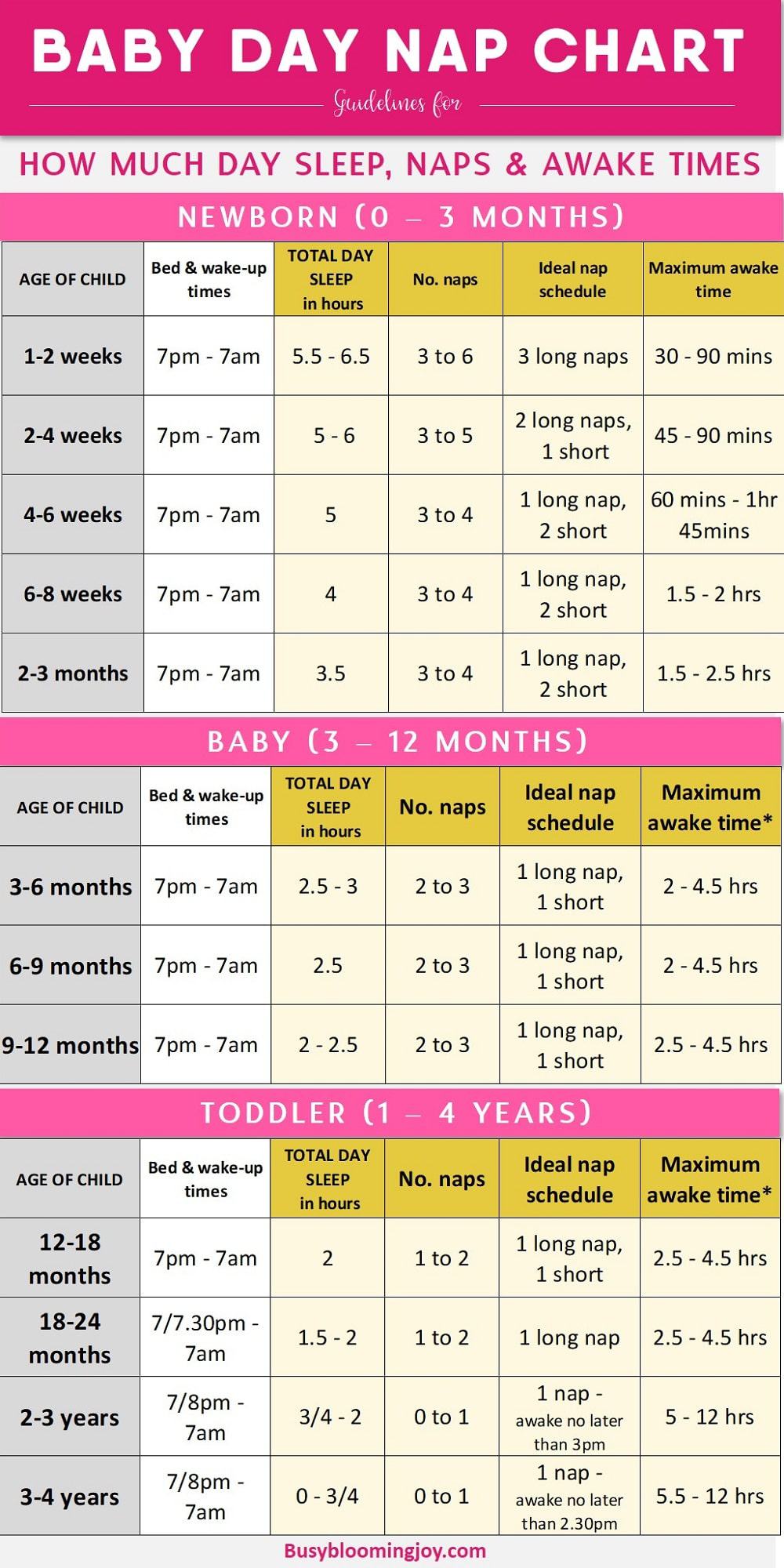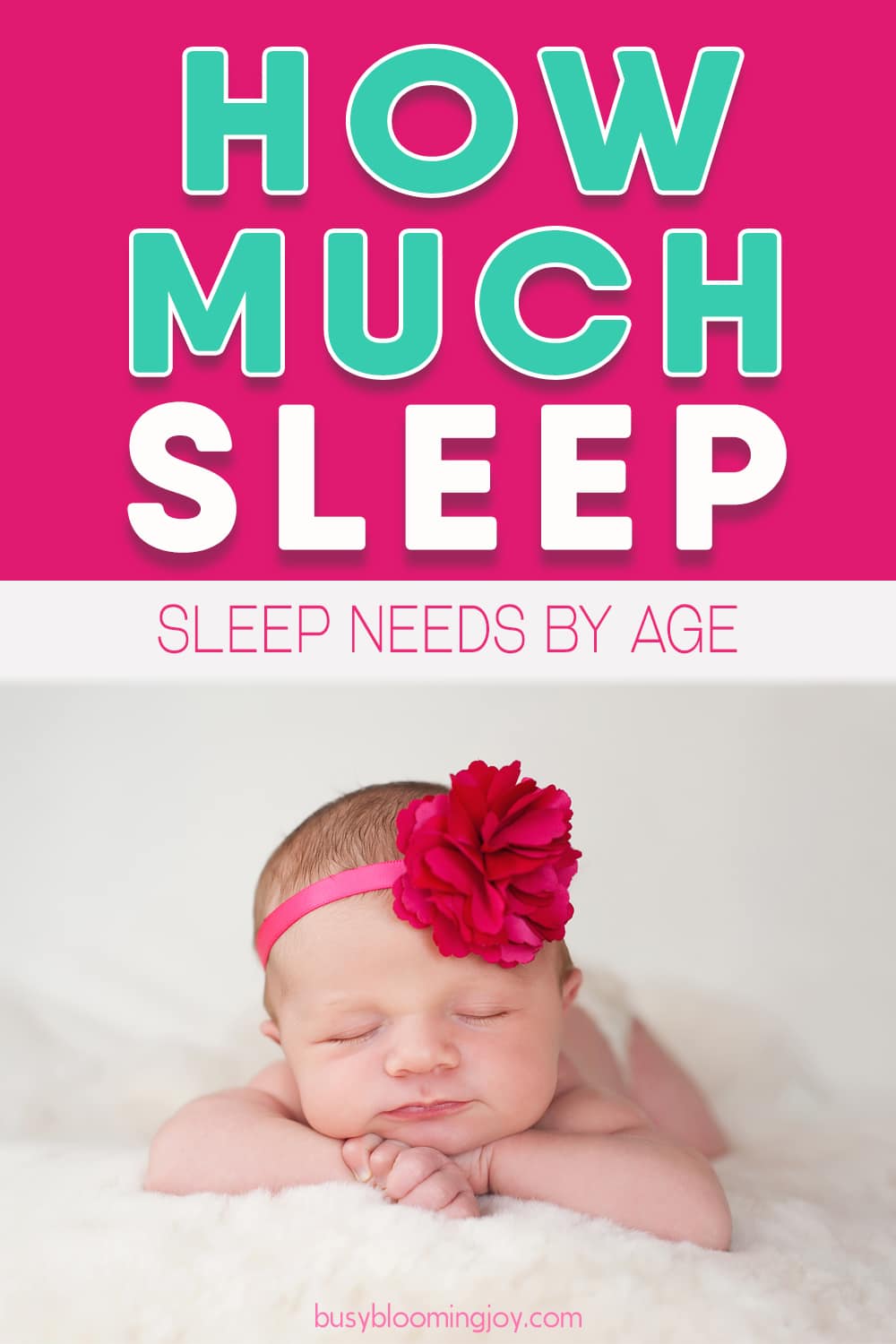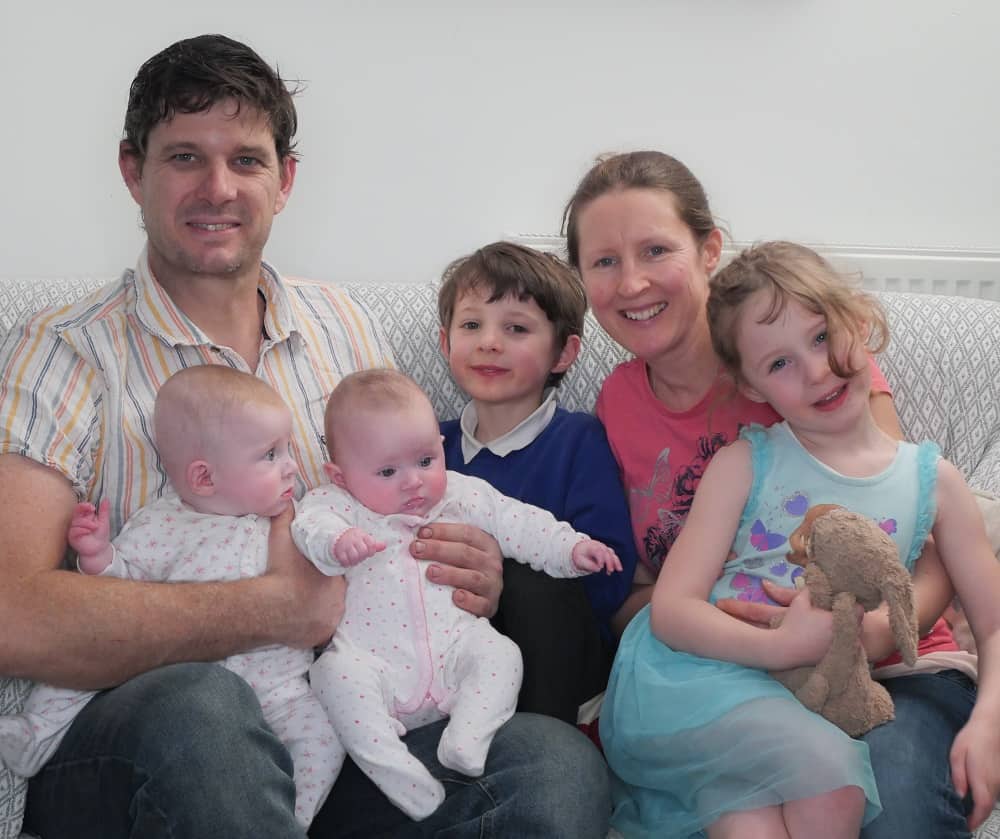Babies sleep a lot. The question is how much sleep do they need? How many naps, how long between naps and how long are the naps? It’s all a bit much!
If only there were some handy baby sleep charts that you could reference… Ah ha, you’ve come to the right place!
In this post, I will cover the ins and outs of how to use these nifty baby sleep charts you will find further down. Print them, pin them, use them. You won’t regret it!
My two babies, turned toddlers, are great sleepers; they took regular naps in the day in line with their age, as per the sleep charts below, and before long were sleeping through the night. Besides the fact that a well-rested baby means a happy baby, sleep is fundamental to healthy growth and development.
Days when naps get missed are NOT days to remember! The result: grumpy, fussy babies who become impossible to settle and whiny, teary-eyed toddlers who don’t have the stamina to enjoy the afternoon.
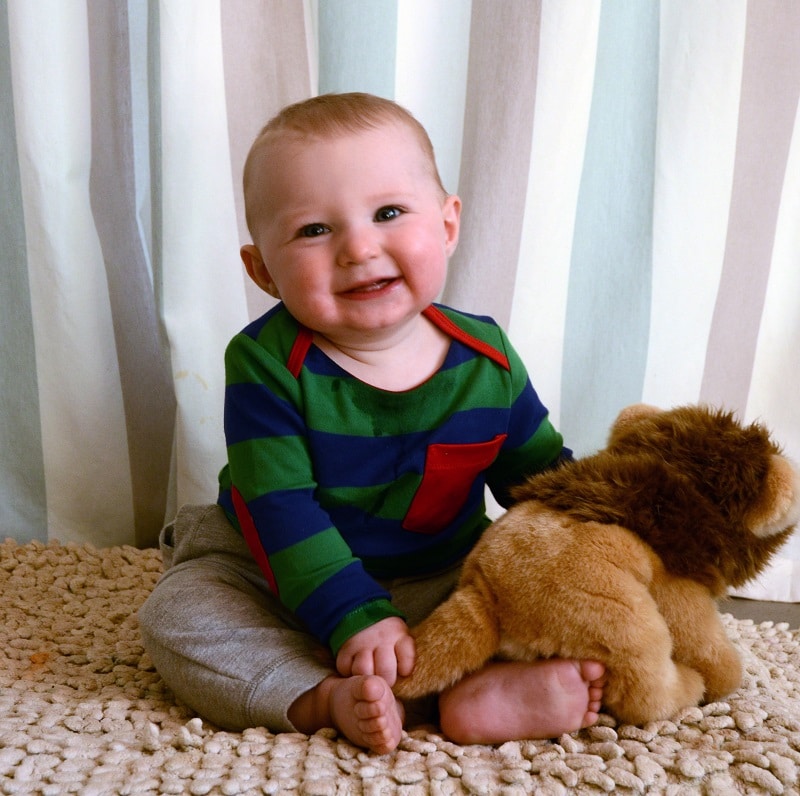
Table of Contents
ToggleWhy we care that baby gets enough sleep
This is kind of obvious, but sleep is pretty darn important!
Chances are if you have a small baby you are still getting up frequently to feed and not getting your typical 8 hours shuteye. A brutal reminder of just how much you need sleep! It’s even more crucial to babies, toddlers and children since they are still growing and developing.
The crucial role of sleep to babies
Sleep is crucial for growth, development, restoration & regeneration
SLEEP PROMOTES GROWTH – growth hormone is active primarily when kids sleep
SLEEP HELPS FIGHT SICKNESS – infection-fighting cytokines are activated during sleep
SLEEP PROMOTES RESTORATION OF NEURAL PATHWAYS – the genes regulating this restoration are only active during sleep
SLEEP PROMOTES LEARNING & MEMORY CONSOLIDATION – building and strengthening neural connections
SLEEP HELPS REGULATE EATING – leptin, the hormone that tells us when we’re full and eaten enough, is partly regulated by sleep (lack of sleep inhibits it, so we continue to eat when we no longer need to)

To simplify, sleep is directly related to:
- Concentration levels
- Attention
- Mood
- Social skills
- Health
- Eating habits
The issues caused by lack of sleep
Sleep deprivation can lead to mood, illness and excessive weight gain. Even a loss of a few hours sleep a day for a few days can start to impact.
The effect of too little sleep on behavior was investigated in depth in this US study of just under 9,000 pre-schoolers (aged around 4 years). The average sleep duration of all 9,000 kids was 10.5 hours. Children sleeping less than the 9.5 hours a night, struggled with significantly higher levels of overactivity, anger, impulsivity, tantrums, ‘annoying behaviors’ and, most of all, aggression.
In addition, kids enduring long-term lack of sleep are more susceptible to illness and excessive weight gain (leptin, which regulates when we feel ‘full’, and signals to stop eating, can deregulate leading to overeating).
Not enough sleep may mean:
- Poor concentration
- Low threshold to stress
- Aggression
- Easily triggered and frustrated
- Overactivity
- Depressed immune system and increased risk of illness
- Excessive weight gain
To read more about the importance of sleep to kids, this and this are great reads.
To read specifically about the science behind the craziness of newborn sleep, check out my ultimate guide: Confused by your newborn’s sleep? The ULTIMATE guide to get you in the know
But just how much sleep does your baby need?
So I think I’ve mentioned a good few reasons why you should ensure your child gets enough sleep and use a baby sleep chart. First a word of caution…
OFFICIAL baby sleep guidelines for newborns
The figures in the sleep chart below are AVERAGES and need to be treated as a GUIDELINE ONLY.
Newborns, in particular, have very different sleep needs. If yours sleeps wildly more or less than these figures it doesn’t necessarily mean there’s anything to worry about.
In fact, there’s been so much difficulty in establishing exactly how much sleep a newborn needs, that The American Academy of Sleep Medicine only offers sleep guidelines for babies 4 months or older, as follows:
- Infants 4–12 months: 12–16 hours
- Children 1–2 years: 11–14 hours
One study noted an average of 14 hours for babies at 4 weeks old, but there was a huge range to these results. Some babies only slept 9 hours while at the other extreme, others were sleeping 19 hours a day. Source.
This article investigates reported newborn and baby sleep needs in depth.
So when it comes to figuring out how much sleep a newborn needs, there isn’t a magic number for each age and stage.
Older babies and toddlers have more similar sleep needs
As babies grow a bit older, there’s less variability in their sleep needs. i.e. although some babies need more sleep than others, the difference might be 11 hours vs. 13 hours at 2 years old (instead of 9 hours vs. 19 hours at 4 weeks old).

How to get started with these baby sleep charts
So if babies have different sleep needs, you’re probably wondering what use is a baby sleep chart? How on earth do I use one?
Well, firstly look at how much sleep your baby is currently getting and where they fit on the chart. Then as your baby grows and develops and needs less sleep you’ll find they naturally progress through the stages.
The SPEED of progress may differ for different babies; my daughter has always needed less sleep than my son so was always a bit ahead (she dropped to just two naps by 4 months old, whereas my son dropped to two at around 6 months).
Once you have figured out where your baby currently fits on the baby sleep chart, use it to guide you through the stages as your baby grows.
Keeping track of naps, awake times between naps and total daily sleep times will mean your baby is less likely to become overtired, miss naps or not get enough sleep.
Using this baby sleep chart should ensure your baby is well-rested. Which means happier babies and toddlers less likely to tantrum.
Surely you don’t need more convincing than that!
Baby sleeping a LOT LESS than suggested in the sleep charts?
Check for signs of tiredness
If your baby or toddler is not showing any signs of tiredness, then you may just have a child that needs less sleep.
To clarify, tiredness cues for a newborn include:
- Yawning
- Stare vacantly
- Avoid eye contact
- Move jerkily
- Frown
- Clench fists
- Fuss and cry
- Become very still
While older babies may also:
- Rub eyes and ears
- Become clingy
- Lose interest in toys
- Suck fingers
- Turn head away from stimulation
And toddlers may:
- Quickly become upset
- Lose patience quickly
- Fuss over their food
- Fuss over everyday chores/tasks like cleaning teeth
- Become aggressive
- Over-excited
The list goes on…
Beware that lots of signs of tiredness can be mistaken for high energy levels and the more tired a child gets, the more hyperactive they can also get.
This is due to the stress hormone, cortisol, that starts building the more tired a child becomes; it’s the body’s response to keep battling on when all energy reserves are gone.
More on overtiredness in babies here: Struggling with an overtired baby? Why you need to act NOW & how to do it
Tips to get your baby or toddler to sleep more
BRING BEDTIME FORWARD – a proper bedtime routine can help set the stage for sleep
ENSURE SLEEP ENVIRONMENT IS CONDUCIVE TO SLEEP – calm, quiet, dark environment and TV off for all day naps and nighttime sleep
AVOID OVERTIREDNESS – overtired babies can become increasingly difficult to settle. Don’t mistake hyperactivity for not being tired!
START A SLEEP SCHEDULE OR ROUTINE – a baby sleep schedule can make naps and bedtimes easier as the body becomes accustomed to going to sleep at the same times every day
“PAUSE” BEFORE RUSHING TO YOUR BABY – newborn sleep is very restless, you may think your baby is waking up or needs comfort when in fact they are deeply asleep. Rushing in may wake your baby when he or she would otherwise have gone back to sleep.
In fact, ‘pausing’ is the most important thing you can do to develop healthy sleep habits and get baby to sleep through the night. Check out: Essential learnings from newborn sleep and the ONLY tip you really need
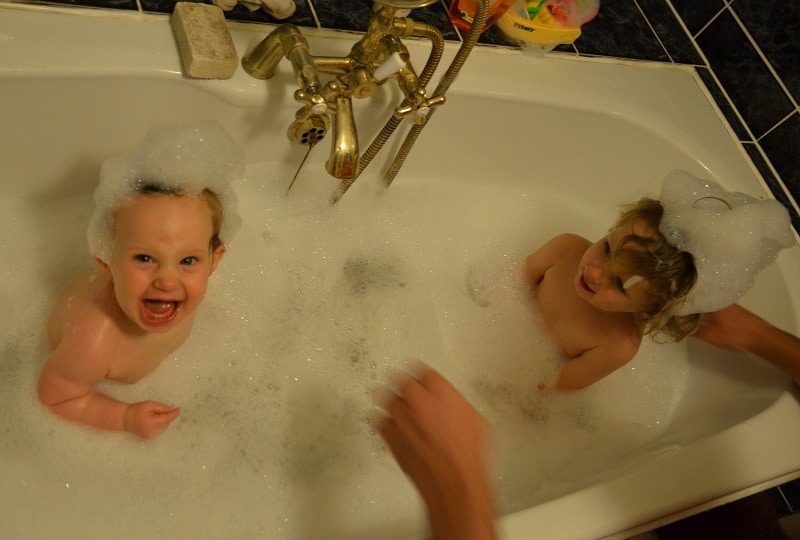
For more baby sleep tips, check out this post: How to get your baby to sleep through the night: 10 no-cry steps to start now
Baby sleeps a LOT MORE than suggested?
Can a baby sleep TOO much?
All babies are different, so if your baby CONSISTENTLY sleeps a lot more than the charts suggest, enjoy!!
But, if your baby SUDDENLY sleeps a lot more from one day to the next, this could be cause for concern
So yes, there is such a thing as a baby sleeping too much.
Combined with any other unusual signs (rash, change in feeding pattern/appetite, change in number of wet/dirty diapers, hydration levels) excessive sleepiness might signal illness.
If you’re concerned, seek professional medical advice.
My experience with my baby ‘sleeping too much’
I kept a close eye on how much my baby was sleeping from day dot, pretty much. So one day I quickly noticed that by lunchtime she’d slept 2 hours more than normal. She was just 3 weeks old.
I couldn’t see anything drastically wrong with her.
She was still feeding well, her temperature was only 0.5 degrees Celcius above normal but, in addition to sleeping a lot more, her skin looked a bit funny. It was sort of ‘mottled’ – I think that’s the term. The grey pattern of a tabby cat’s fur is the best description I can come up with. (Without the fur or the greyness!)
I ummed and ahhed about wasting the doctors time and coming across as a neurotic mom. But my instinct to rather be safe than sorry won over.
I spoke to the doctor on the phone and I couldn’t quite believe it when he booked us straight into the hospital; she was admitted with suspected bacterial meningitis. We spent 3 days in hospital while my daughter was constantly monitored and on antibiotics.
As it turns out, she had viral meningitis and was back to her normal self and allowed home on day 4… but it was a little scary.
So you can see a real reason now for being a little more aware about how much your baby is sleeping. If you think baby is sleeping too much and are the least bit concerned, don’t hesitate to get professional advice.

On a side note, the course of antibiotics knocked my daughter for six.
She was already quite a gassy baby, struggled with reflux and most afternoons battled at the ‘witching hour’. This all went downhill after the antibiotics. Hint: help your baby recover with these Infant-formulated probiotics.
If your baby struggles with gas, colic, reflux or the witching hour, it was during and after my daughter struggled so badly that I learned a thing or two about these particular things…Check out these posts:
- Got a gassy baby? 16 Common causes & remedies to fix them for good
- Colic: what is it & is crying really inconsolable? Plus causes & remedies (yes, there ARE some)
- The scoop on REFLUX REMEDIES: natural remedies, over-the-counter ones & prescribed medications
- Got a ‘Witching Hour Baby’ on your hands? 7 steps to end evening fussiness for good
Too much sleep in the day is OFTEN a problem
Baby can definitely sleep too much in the day – that can often be a key issue in why your baby wakes up at night. Not only does too much day sleep mean baby won’t be tired enough to sleep the whole night, but also means he or she won’t take enough milk in the day and will need to catch up at night.
So waking your baby from day naps is key!
Sleeping all day long is also common in the early days, since babies are normally born with day night confusion.
Related post: Newborn Sleeps All day? 10 fail-safe tactics to fix day night confusion fast!
Factors that may affect your child’s daily sleep needs
DEVELOPMENTAL PHASES – e.g. learning to walk or talk may increase sleep demands or by contrast, interrupt normal sleep patterns
ACTIVITY LEVELS – after a day with lots of physical activity (an outing to soft play as a baby, or lots of running, swimming, climbing as a toddler etc) a child might need an extra nap, a longer nap or earlier bedtime
LATE NIGHT/MISSED NAPS DAY BEFORE – baby might need more sleep the following day (this one always catches me out since it’s so easy to forget from one day to the next!)
BIG CHANGES AT HOME OR IN DAY-TO-DAY ROUTINE – for example, house move, divorce, new nursery etc all of which are emotionally demanding and therefore tiring
ILLNESS – like adults, recovery from illness needs more sleep

THE Baby Sleep Charts
There ended up being a bit too much information to fit into one chart, so there’s a ‘baby sleep chart’ and a ‘baby day nap chart’:
1 – BABY SLEEP CHART: How much sleep per day in total by age, then split between day and night (with wake-up and sleep times)
2 – BABY DAY NAP CHART: Total day sleep per age, with number of naps and an ‘ideal’ nap schedule, plus maximum awake times.
Scroll down past the charts for details on how to use them.
Both are handy pinnable images – pin away!
Notes and tips for using the BABY SLEEP CHART
Most of the chart should be self-explanatory, but some won’t be. So let’s go through column by column so there can be no misunderstanding.
AGE OF CHILD
The age of your child, in weeks, months, years etc
TOTAL SLEEP
This is the total sleep your baby should have in any 24 hour period. Since we’re talking about a 7 am wake-up time, let’s think of this as from 7 am one morning to 7 am the next morning
BEDTIME & WAKE-UP TIMES
I’ve used 7 pm and 7 am but you could move this forward or back to suit your family and lifestyle. As long as you keep the total night sleep hours to the suggested level.
TOTAL NIGHT SLEEP
This is the total sleep at night time. Obviously, your baby will need to wake multiple times in the night when small to feed.
Or you may choose to wake your baby for a Dream Feed.
But these awake periods should be ONLY to feed, nothing else. Your baby should quickly settle back to sleep during these ‘night’ feeds. (You may also want to dream feed your baby between 9 pm and 11 pm, or just before you want to go to sleep.)
TOTAL DAY SLEEP
This is the total sleep in the day time. So using 7 pm as bedtime and 7 am as a wake-up time, day sleep is any sleep between the hours of 7 am and 7 pm.
Notes and tips for using the BABY DAY NAP CHART
Again, most of the chart should be self-explanatory, but let’s go through it just to be sure.
AGE OF CHILD
As before, the age of your child, in weeks, months, years etc
BEDTIME & WAKE-UP TIMES
As before, I’ve used 7 pm and 7 am but you could change this to suit your needs. As long as you keep the total night sleep hours to the suggested level.
TOTAL DAY SLEEP
Again, this is the total sleep in the day time. So using 7 pm as bedtime and 7 am as a wake-up time, day sleep is any sleep between the hours of 7 am and 7 pm.
NUMBER OF NAPS
This is the number of naps taken during the daytime hours of 7 am and 7 pm
IDEAL NAP SCHEDULE
This is ‘ideal’ because it encourages fewer and therefore longer naps. This can benefit a baby who gets a longer rest and also you!
Let’s just be clear:
- SHORT NAPS – one sleep cycle or shorter. So 45 minutes max
- LONG NAPS – naps longer than one sleep cycle. So 60 minutes to 2.5/3 hours, depending on your baby’s age
For more on naps and how to encourage a super solid long one, check out: Fed-up with short naps? 9 tactics to take 2 hour naps from dream to reality
If only 1 longer nap is suggested (so when baby hits 4-6 weeks) then this will be most beneficial to baby if it’s in the early afternoon, right in the middle of the day.
MAXIMUM AWAKE TIME
This is the time between naps INCLUDING the time it takes to feed.
So if your 1-2 week old baby wakes at 10 am, takes 25 mins to feed then he or she may be ready to go back to sleep almost immediately after feeding (max awake time is 30 to 90 mins at this age).
Figuring out your baby’s awake time means you should avoid your baby coming overtired; overtired babies can be impossible to settle plus it’s a surefire way to developing sleep associations.
Check out this overtired baby post to learn how. The link should jump you straight to the awake times section.
Starting a sleep schedule or routine
A sleep schedule or routine is a natural progression from following a baby sleep chart. In the chart, you will see a column marked: ‘ideal nap schedule’. If you follow this and organize your long and shorter naps at the same time every day, then that’s a sleep schedule right there.
So how do you start to organize long and short naps according to schedule?
There are two main ways:
- Wake baby after 45 minutes – that’s a ‘short nap’
- Encourage baby to sleep for 60 minutes or longer
Related post: Fed-up with short naps? 9 tactics to take 2 hour naps from dream to reality
If you keep an eye on awake times, wake your baby to ensure short naps (in the morning and late afternoon) and encourage longer ones at other times (in the early afternoon) you will have a sleep schedule.
For a ready-made schedule, taking all the guesswork out of sleep and feeding times, this one should get you going in the right direction:
Starting A Newborn Sleep & Feeding Schedule That You And Your Baby Will Love – The Ultimate Guide
Closing thoughts
Find where your baby currently fits on the sleep chart, and use it to guide you through the ages and stages. So your baby always gets enough sleep!
Don’t panic if your baby is wildly off in the early days and weeks, your baby’s sleep patterns will become more consistent and fit onto the sleep chart in time.
Enjoy more predictability with your baby’s sleep and a happy, well-rested baby!
Please let me know how you get on – is the ‘ideal nap schedule’ helpful? Did it fit with your baby?
I’d love to know!



